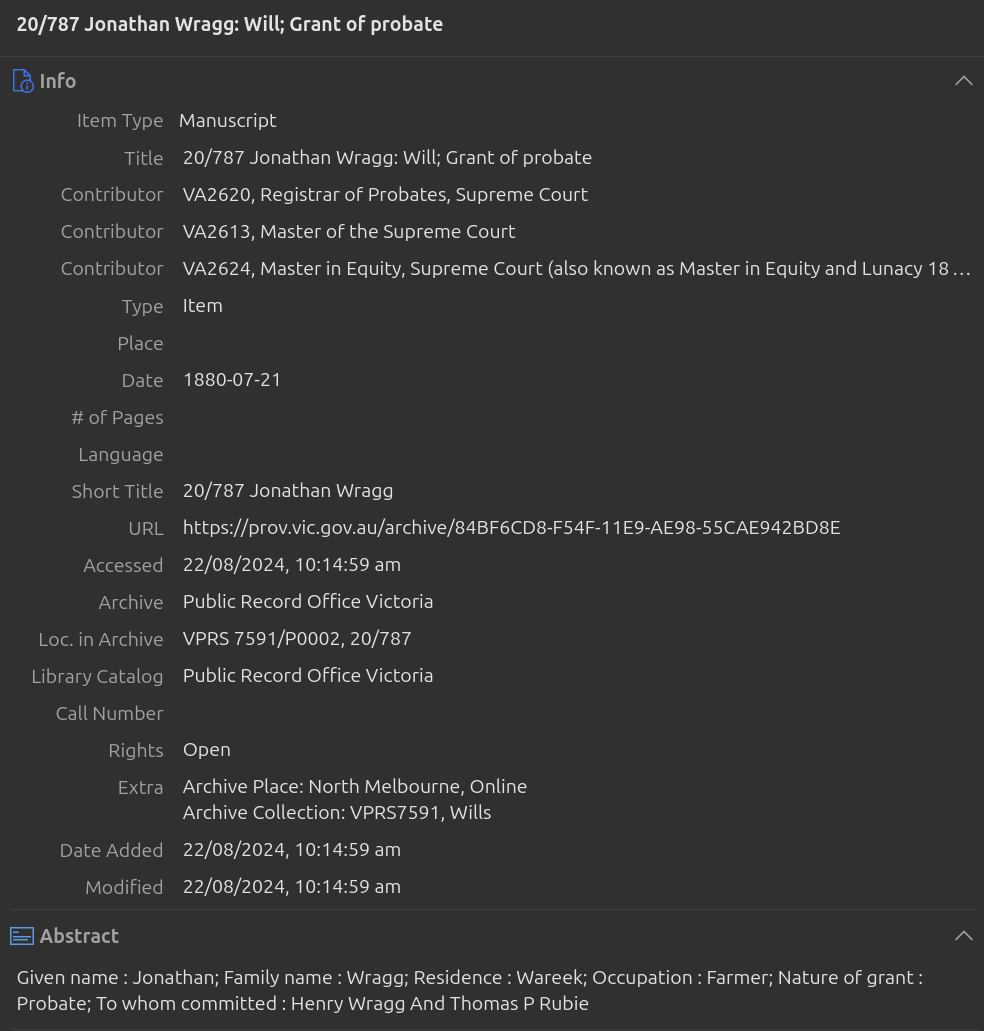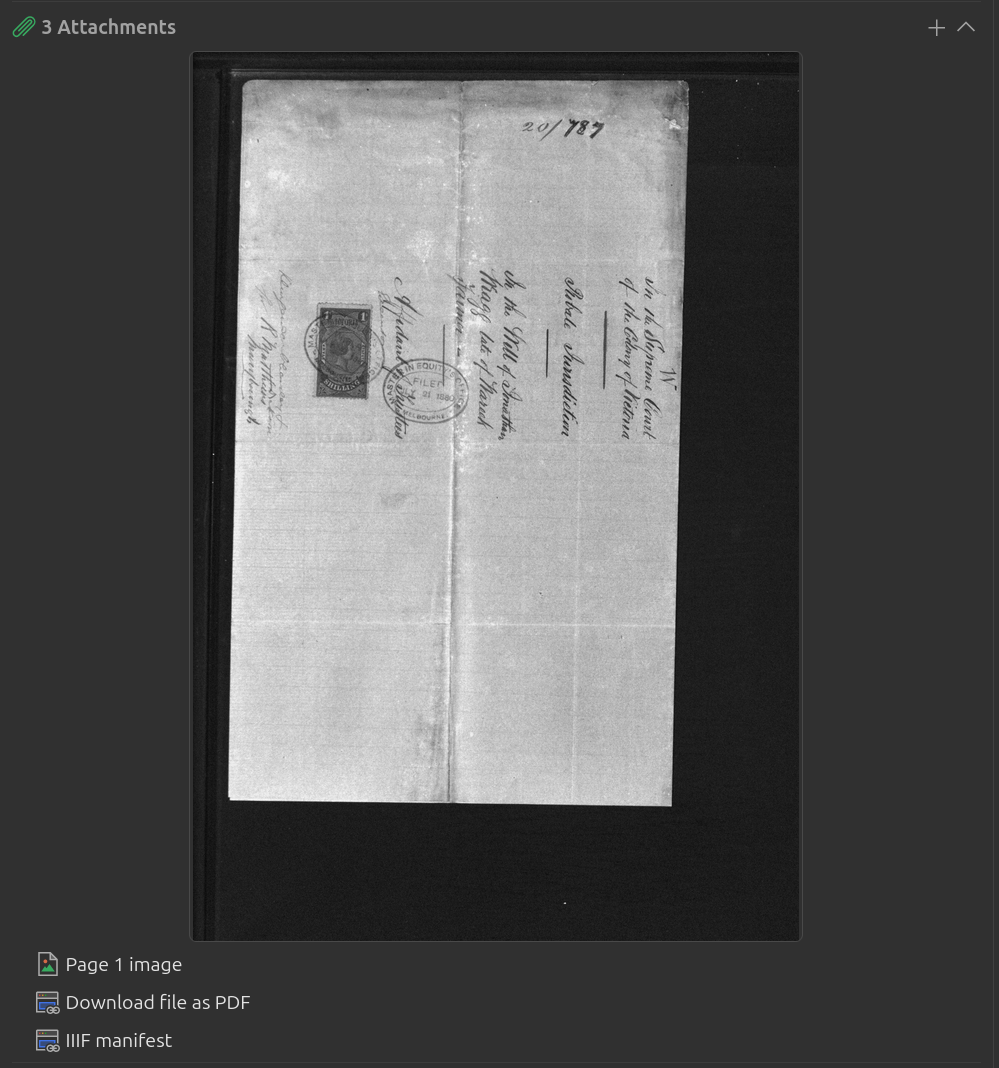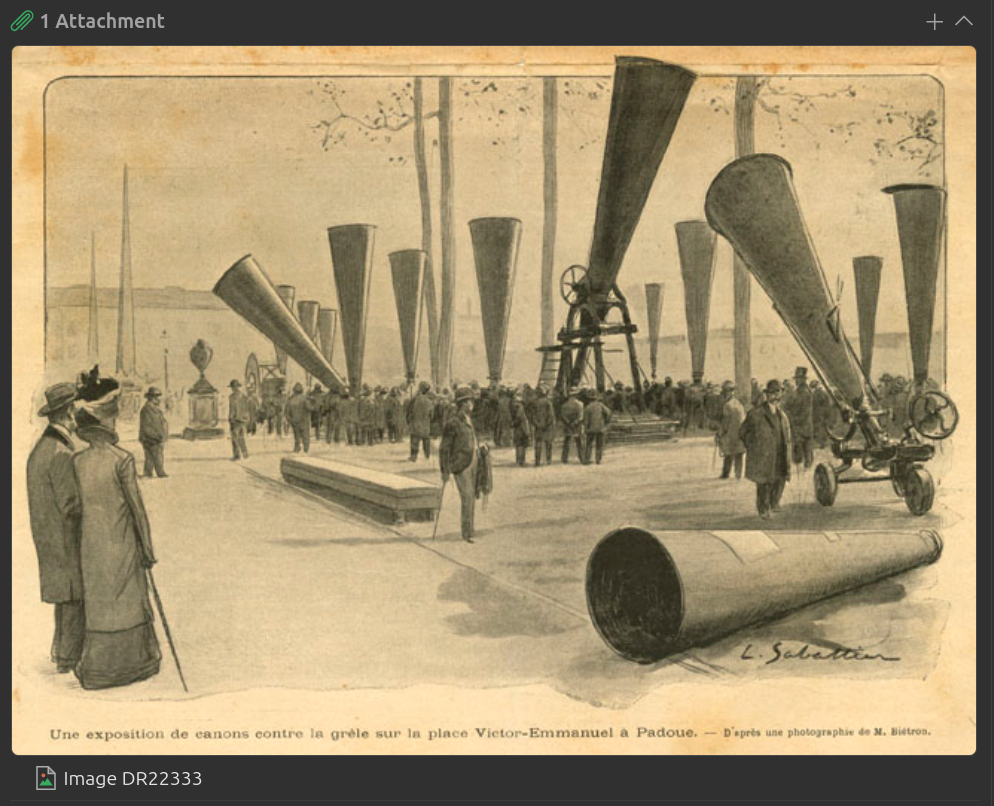New Zotero translators for PROV and Queensland State Archives
Good news for Australian archives users – you can now use Zotero to capture item details and digitised files from the collections of the Public Record Office Victoria and the Queensland State Archives!
What is Zotero?
According to the Zotero website:
Zotero is a free, easy-to-use tool to help you collect, organize, annotate, cite, and share research.
While you can use it instead of commercial reference managers like EndNote, Zotero is much, much more. I use Zotero as my personal research database, capturing publications, websites, PDFs, as well as records from a growing number of GLAM collections. You can add tags and notes to items, organise them into collections, and annotate PDFs and website captures. You can also share your collections, create groups to collaborate with others, and access all your Zotero data via an API. And on top of all that, Zotero has just been completely revamped with a cool new interface (yay, dark mode!).
Extending Zotero
One of my favourite features is the ability for users to extend Zotero by creating new ‘translators’. Translators are little bits of Javascript code that capture information from a website and load it into Zotero. If there’s a online collection or database that doesn’t currently work with Zotero, you can write a translator for it and have it added into the main application. The Zotero translators repository currently contains more than 700 translators created by more than 200 contributors. That’s a pretty significant community effort!
And as of today, the repository includes translators for the PROV and Queensland State Archives collection databases.
Capturing PROV records
The PROV translator makes use of PROV’s collection API. It will capture item records from search results or individual item pages – just click on the Zotero icon in your browser’s toolbar. Here’s an example of the metadata Zotero captures from this record.

As well as expected details like ‘title’ and ‘date’, the translator saves the agencies that created the file as ‘contributors’. Some additional archival metadata such as the series details are included in the ‘Extra’ field.
If a file has been digitised, the translator also captures a number of ‘attachments’:
- an image of the first page (particularly handy if the item is a photograph)
- a link to a PDF version of the file
- a link to the IIIF manifest describing this file

Why doesn’t it attach the complete PDF rather than just a link? The download PDF links in the PROV interface behave differently depending on the size of the file. If the file is small, the link loads the PDF as expected. But if it’s large you’re redirected to a web page that tells you that the PDF is being generated and could take up to an hour. There wasn’t a straightforward way for Zotero to handle these two possible outcomes, so instead of trying to attach the PDFs, I’ve saved the link. You can then click on the link to view/generate the PDF and add it manually to the record if you desire.
What’s an IIIF manifest? PROV delivers digitised images using the International Image Interoperability Framework (IIIF). An IIIF manifest is a standard way of describing a group of related images. PROV uses IIIF manifests to describe the contents of each digitised file. The link to the file manifest isn’t available through the PROV web interface, but the translator picks it up from the API and attaches it to the Zotero record.
Because manifests are based on the IIIF standard, they can be reused across different applications. For example, you could use the PROV manifest links to load a digitised file into Tropy, a desktop tool for managing and annotating images from the creators of Zotero. There’s an example of doing this with an IIIF manifest generated from Trove in the Trove Data Guide. You can also use the manifest links to download all the images from a file using a tool like IIIF Download.
Capturing Queensland State Archives records
The QSA translator will capture item records from search results or individual item pages – just click on the Zotero icon in your browser’s toolbar. Here’s an example of the metadata Zotero captures from this record.

As far as I can see, digitised files in the QSA collection will either be a PDF or an image. Either way, the translator captures the file and attaches it to the record.

Zotero and Australian GLAMs
Unfortunately there’s still a lot of work to be done before all Australian GLAM organisations are integrated with Zotero. Ideally, GLAM collection databases would support Zotero directly by embedding metadata in their web pages. This would make custom translators unnecessary (and support other types of integration as well). But few actually do this. When it comes to embedded metadata we seem to have gone backwards in recent years as systems have been ‘upgraded’.
The good news is that there are now custom translators for Libraries Tasmania, National Archives of Australia, Trove, National Gallery of Australia, State Records Office of WA, PROV, and Queensland State Archives. But translators need maintenance, and they’re often broken by site upgrades. Also some systems (particularly the large commercial ones) make it very difficult (if not impossible) to write useful translators.
If you’re interested in the current situation, I’ve created a spreadsheet documenting GLAM Zotero support. As I’ve suggested previously, a project aimed at improving Zotero integration across Australian GLAM organisations would make a big (and relatively cheap) contribution to Australia’s HASS research infrastructure.